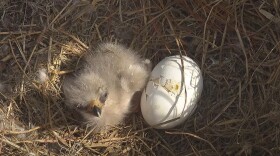A bill that’s a major step toward restoring the Everglades’ natural water flow is on its way to President Obama.
Late Friday night, the Senate approved a nearly $2 billion dollar plan called the Central Everglades Planning Project, more commonly known as the Central Everglades Plan. The plan was initially approved by Congress in September, but language discrepancies between the House and Senate versions had to be ironed out before it could go to the president.
"Right now if you think of the Everglades, you have three or four compartments. And some of the compartments have too much water. Some of the compartments don’t have enough," said Eric Eikenberg is CEO of the Everglades Foundation. "Too much water leads to flooding; too little water can result in fires and plant die-off.
"The Central Everglades Plan is going to remove all of these man-made barriers, these levees, these dams, and allow water to flow across the central part of the system," Eikenberg said.
Removing man-made obstacles will help allow water to flow south from Lake Okeechobee, so it doesn’t have to be released to the east and west. Those east-west releases were a main cause of the smelly, guacamole-like algae that polluted waterways along Florida’s coasts this summer.
Eikenberg says a reservoir plan proposed by incoming Florida House President Joe Negron would help reduce pollution in the water, before that water gets sent south. Negron's plan is expected to be taken up by Florida legislators when the Legislature goes into session in March.
Copyright 2020 WLRN 91.3 FM. To see more, visit . 9(MDAyMTYyMTU5MDEyOTc4NzE4ODNmYWEwYQ004))








